What's New
Displaying results 4541 - 4550 of 4914

Resource | Presentations,
Presentations slides on the HIV/AIDS in Malaysia Impact on the Quality of Life during the Asian Forum of Parliamentarians on Population and Development on 12 March 2006

Resource | Publications,
There are 67,528 cumulative cases of HIV/AIDS reported in Malaysia up to June 20051. For the last five years, the number of newly detected HIV cases has been at an average of 6000 to 6900 per year. Since the disease emerged in 1986, the profile of HIV infection has remained consistently driven by the injecting drug users (IDUs), male, young people aged 20-39 years and among the Malay ethnic group.
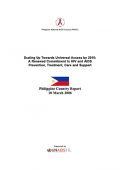
Resource | Publications,
From late December 2005 to March 2006, the Philippines undertook a series of initiatives to develop its targets and roadmap in line with the global initiative towards “Scaling Up Universal Access to HIV Prevention, Treatment, Care and Support”.
The target-setting process undertaken highlighted crucial issues in scaling up that have already been identified in previous assessment exercises.
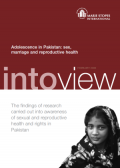
Resource | Publications,
With 158 million people, Pakistan is one of the most populous countries in the world. It is also one of the poorest, with 66% of the total population living on less than US$2 a day (Population Reference Bureau, 2005.). In Pakistan, as in many developing countries, poverty is intrinsically linked with poor sexual and reproductive health (SRH).
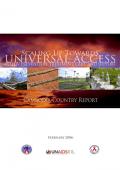
Resource | Publications,
In Cambodia, a national consultation on universal access was held on February 7, 2006, with participation from representatives from government, civil society, the donor community, and other stakeholders. The results of this consultation were distilled into a country report that was presented at a regional consultation held in Pattaya, Thailand on February 14-16. This document refines the initial country report, in line with the recommendations that arose from the regional consultation.
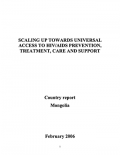
Resource | Publications,
Mongolia is a country in North East Asia with a population of 2.5 million. Since 1992 there were 16 cases of HIV/AIDS reported. As of December 2005 the number of HIV/AIDS cases is estimated to be less than 500 cases (WHO/UNAIDS Global Report). Eleven of the 16 reported cases were diagnosed within 2005, while the remaining 5 cases were diagnosed over a period of 12 years.
At the end of 2005, many indications point that Mongolia is at the brink of an HIV epidemic with an imminent risk to the widespread dissemination of HIV to the general population through sexual transmission.
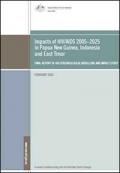
Resource | Publications,
The HIV Epidemiological Modelling and Impact (HEMI) Study was commissioned by the Australian Government for the Governments of Papua New Guinea (PNG), Indonesia and East Timor. The research was conducted by New South Global Pty Limited in 2005.
An epidemiological model was developed to project the future course of the HIV epidemic over the period 2005–2025 in PNG, Indonesia and East Timor under three scenarios. The first scenario assumed that HIV interventions remain at current levels (baseline scenario). The second and third scenarios assumed increases in HIV interventions to medium and high response levels.
Projections of HIV case numbers and deaths were used as a basis to estimate future social, economic and security impacts.
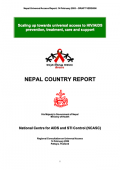
Resource | Publications,
The report that follows will describe the nature of the HIV epidemic in Nepal as well as the performance of the national response, its obstacles, goals, key targets and actions for a scaled-up effort towards universal access.
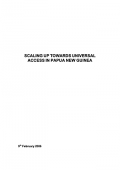
Resource | Publications,
This report presents Papua New Guinea’s response to scaling up towards Universal Access. This new initiative places greater emphasis on scaling up prevention, treatment, care, and support within the country.
The objectives of this report are to:
- Describe the current epidemic in PNG, the patterns and trends, and likely impacts
- Outline the current targets for implementation of the national response
- Provide an overview of what has been achieved to date
- Identify challenges and constraints in implementation primarily within the health sector
- Develop achievable targets for 2010 and a roadmap for implementation.
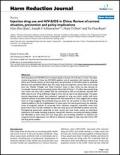
Resource | Publications,
Illicit drug abuse and HIV/AIDS have increased rapidly in the past 10 to 20 years in China. This paper reviews drug abuse in China, the HIV/AIDS epidemic and its association with injection drug use (IDU), and Chinese policies on illicit drug abuse and prevention of HIV/AIDS based on published literature and unpublished official data.
As a major drug trans-shipment country with source drugs from the "Golden Triangle" and "Gold Crescent" areas in Asia, China has also become an increasingly important drug consuming market. About half of China's 1.14 million documented drug users inject, and many share needles. IDU has contributed to 42% of cumulatively reported HIV/AIDS cases thus far. Drug trafficking is illegal in China and can lead to the death penalty. The public security departments adopt "zero tolerance" approach to drug use, which conflict with harm reduction policies of the public health departments. Past experience in China suggests that cracking down on drug smuggling and prohibiting drug use alone can not prevent or solve all illicit drug related problems in the era of globalization. In recent years, the central government has outlined a series of pragmatic policies to encourage harm reduction programs; meanwhile, some local governments have not fully mobilized to deal with drug abuse and HIV/AIDS problems seriously. Strengthening government leadership at both central and local levels; scaling up methadone substitution and needle exchange programs; making HIV voluntary counseling and testing available and affordable to both urban and rural drug users; and increasing utilization of outreach and non-governmental organizations are offered as additional strategies to help cope with China's HIV and drug abuse problem.





